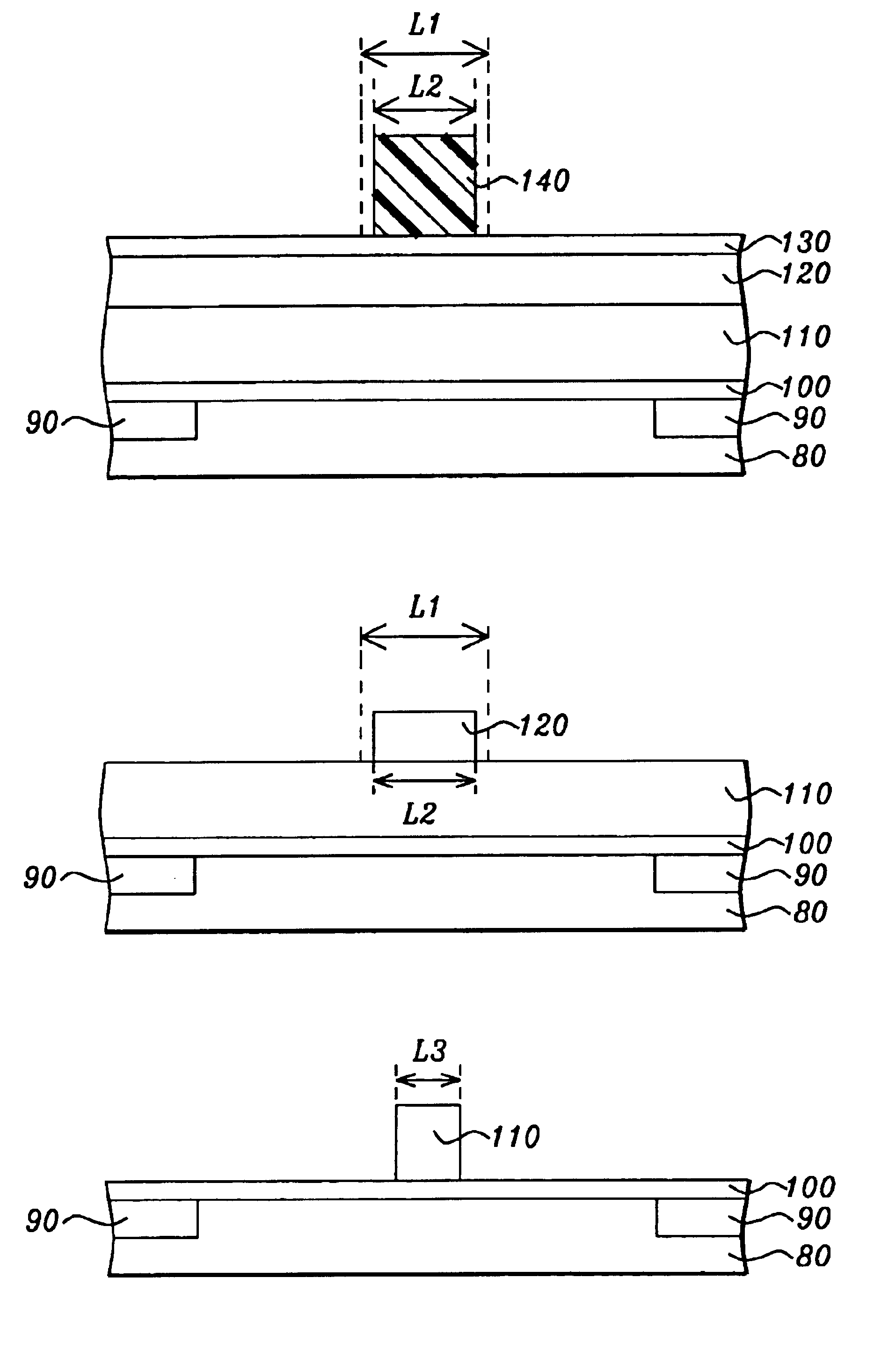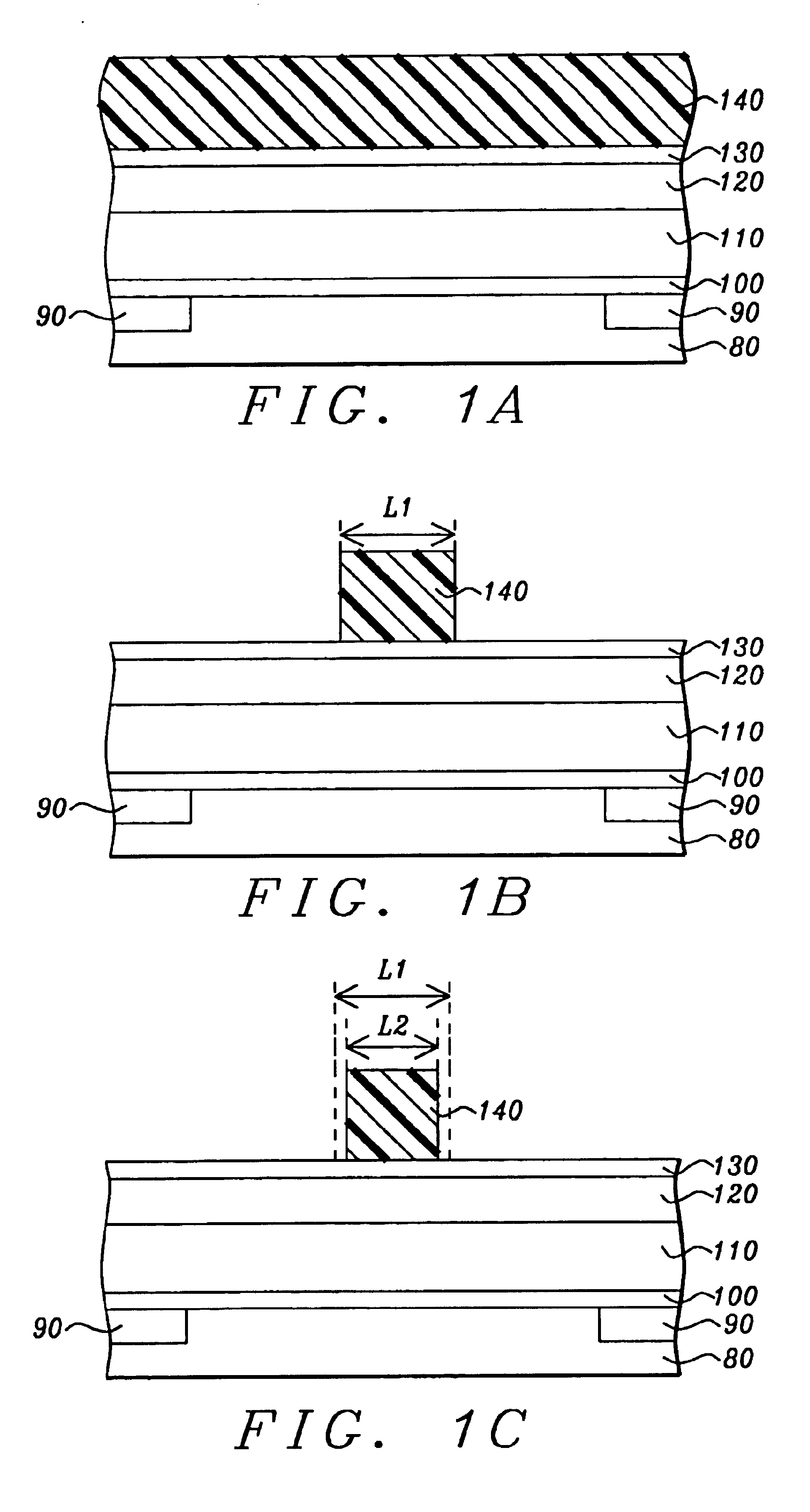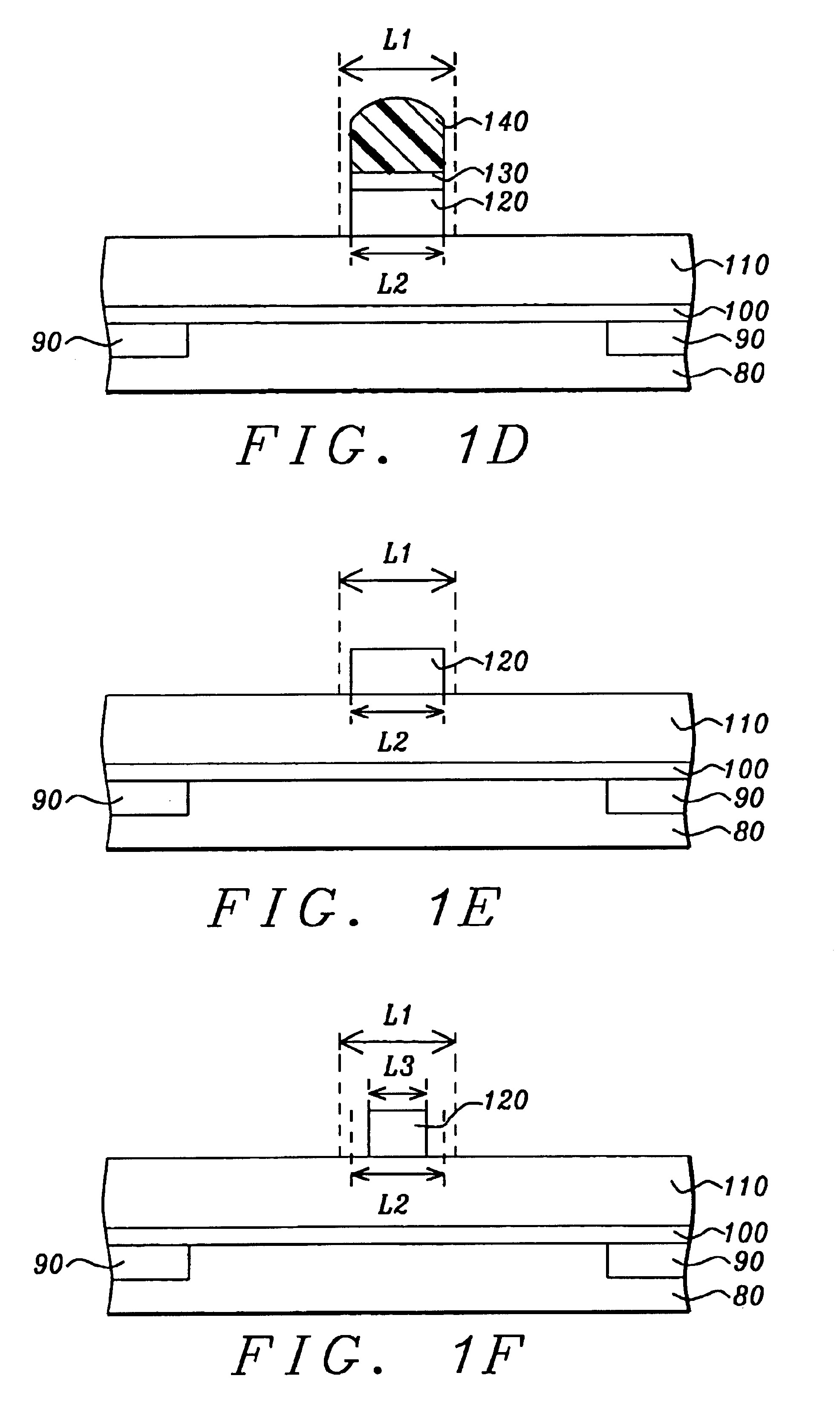Method to control critical dimension of a hard masked pattern
a technology of microelectronic integrated circuit and polysilicon gate, which is applied in the direction of basic electric elements, electrical apparatus, and devices based on varying gate lengths, can solve the problems of inability to control the inability to provide details about the amount of cd reduction in nm, so as to reduce cd, reduce cd, and control the effect of treatmen
- Summary
- Abstract
- Description
- Claims
- Application Information
AI Technical Summary
Benefits of technology
Problems solved by technology
Method used
Image
Examples
example 1
Wet Etch Process of an Oxide Hard Mask
A patterned substrate that was processed through the etch transfer step into a 500 Angstrom thick oxide hard mask as shown in FIG. 1E was taken through the following steps. A substrate with a hard mask CD L2 of 149 nm was dipped in an SPM solution with a H2SO4H2O2 ratio of 4:1 at 130° C. for 1800 seconds. This process was repeated two more times at the same concentration, dip time and temperature. The substrate was rinsed with 800 ml of deionized water and dried by a Maragoni dryer for 600 seconds. The resulting hard mask CD (L3) was measured to be 147 nm. The substrate was then dipped in an APM solution with a NH4OH: H2O2: H2O ratio of 1:4:20 at 50° C. for 60 seconds and rinsed with 800 ml of deionized water and dried by a Maragoni dryer for 600 seconds. The resulting hard mask CD (L3) was 147 nm with a CD variation of + / −2 nm. The substrate was then etched with a standard polysilicon gate dry etch to transfer the pattern with dimension L3 into...
example 2
Wet Etch Process of an Oxynitride Hard Mask
A patterned substrate that was processed through the etch transfer step into an 500 Angstrom thick oxynitride hard mask 120 as shown in FIG. 1E was taken through the following steps. The substrate with a hard mask CD L2 of 150 nm was dipped in a buffer HF (BHF) solution (1:100 HF :H2O) at 23° C. for 15 seconds and then rinsed with 800 ml of DI water and dried by a Maragoni dryer for 600 seconds. The substrate was then dipped in an SPM solution with a H2SO4: H2O2 ratio of 4:1 at 50° C. for 1800 seconds. The SPM treatment was repeated two more times at the same concentration, dip time and temperature. The wafer was rinsed with 800 ml of deionized water and dried by a Maragoni dryer for 600 seconds. The resulting hard mask CD (L3) was measured to be 149 nm. The substrate was next dipped in an APM solution with a NH4OH: H2O2: H2O ratio of 1:4:20 at 50° C. for 180 seconds and rinsed with 800 ml of DI water and dried by a Maragoni dryer for 600 s...
PUM
| Property | Measurement | Unit |
|---|---|---|
| thickness | aaaaa | aaaaa |
| thickness | aaaaa | aaaaa |
| temperature | aaaaa | aaaaa |
Abstract
Description
Claims
Application Information
 Login to view more
Login to view more - R&D Engineer
- R&D Manager
- IP Professional
- Industry Leading Data Capabilities
- Powerful AI technology
- Patent DNA Extraction
Browse by: Latest US Patents, China's latest patents, Technical Efficacy Thesaurus, Application Domain, Technology Topic.
© 2024 PatSnap. All rights reserved.Legal|Privacy policy|Modern Slavery Act Transparency Statement|Sitemap



